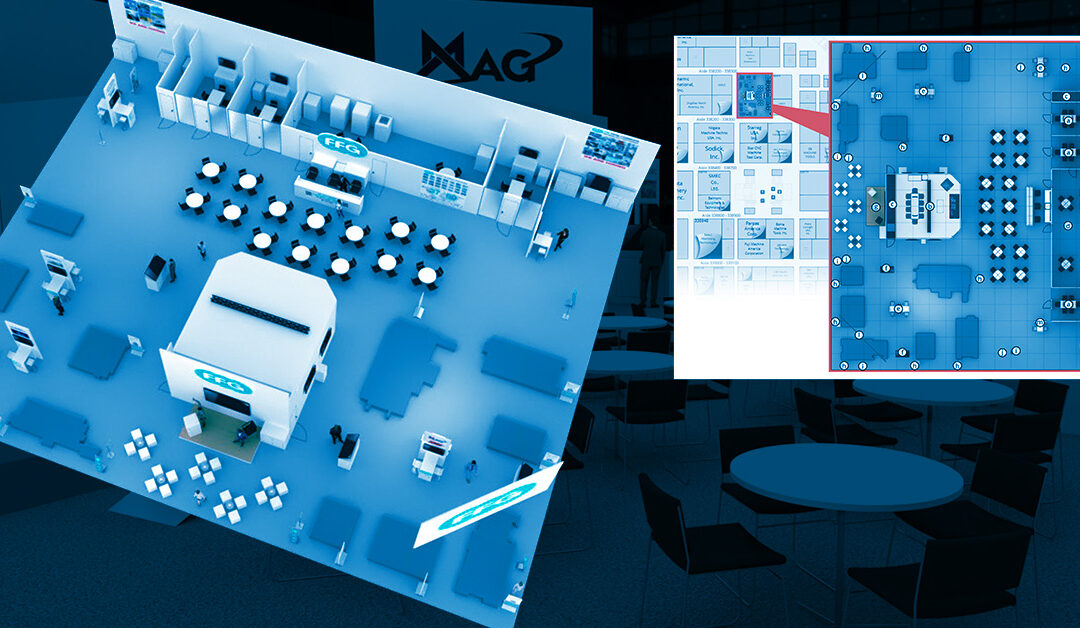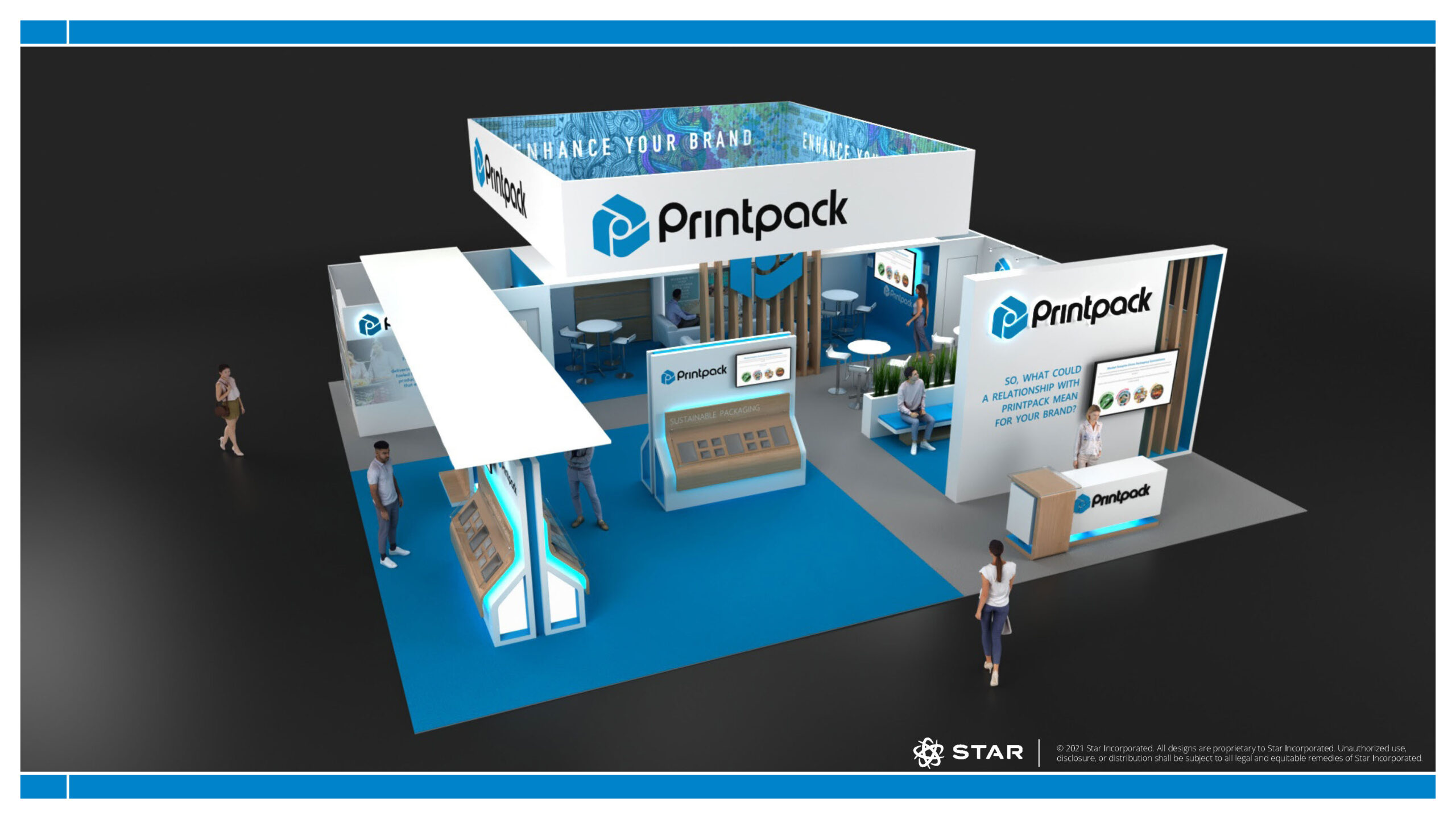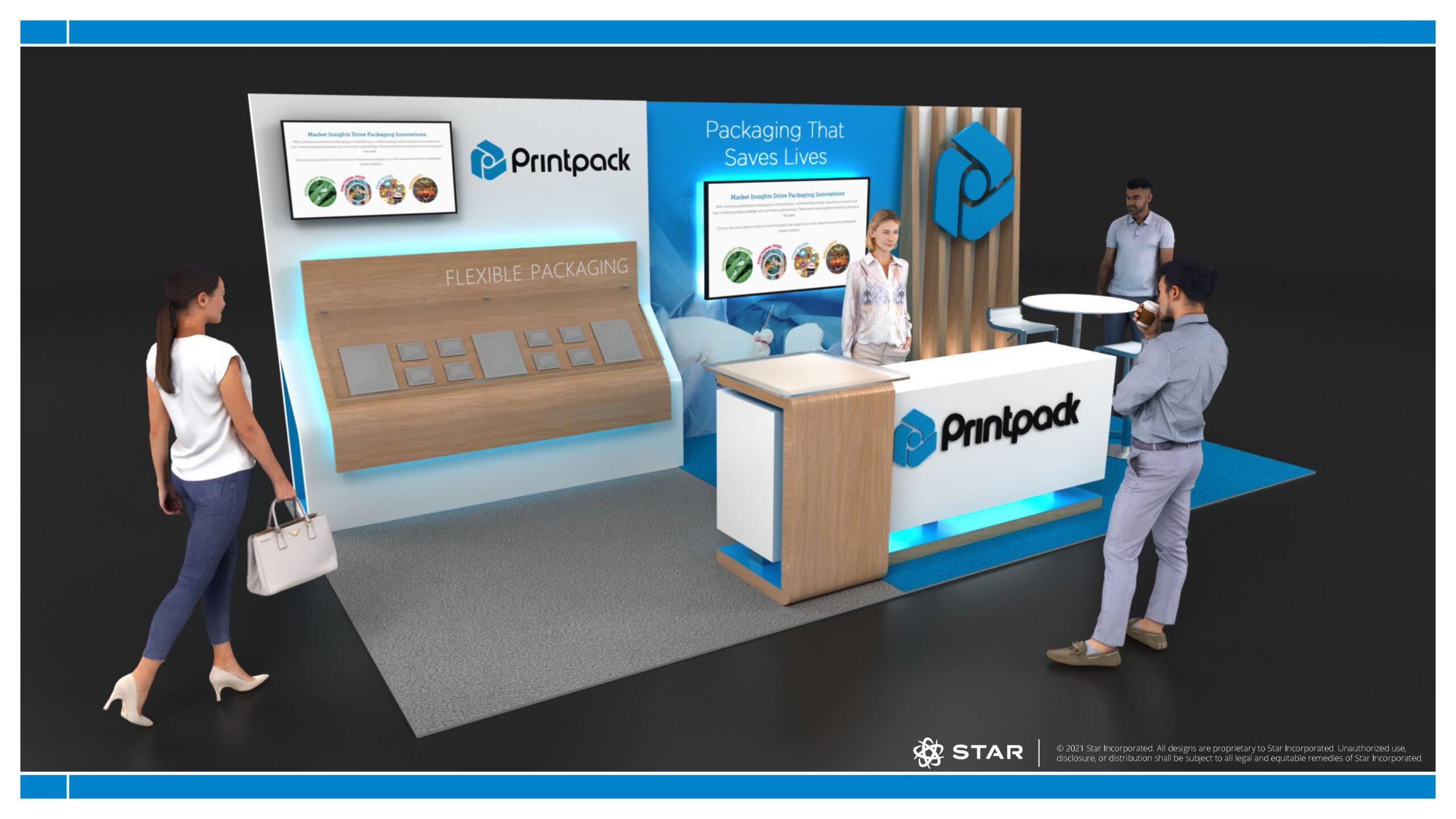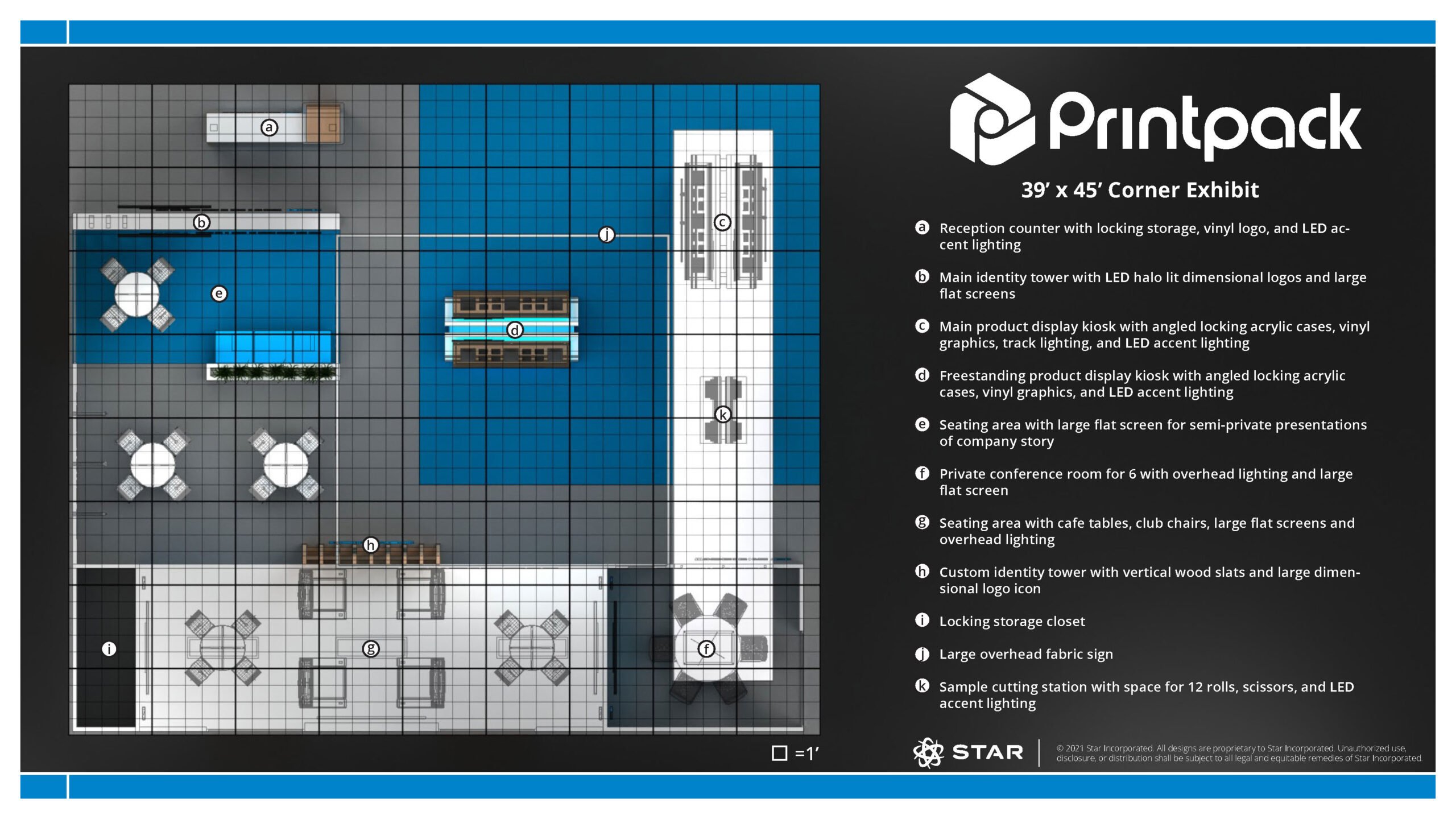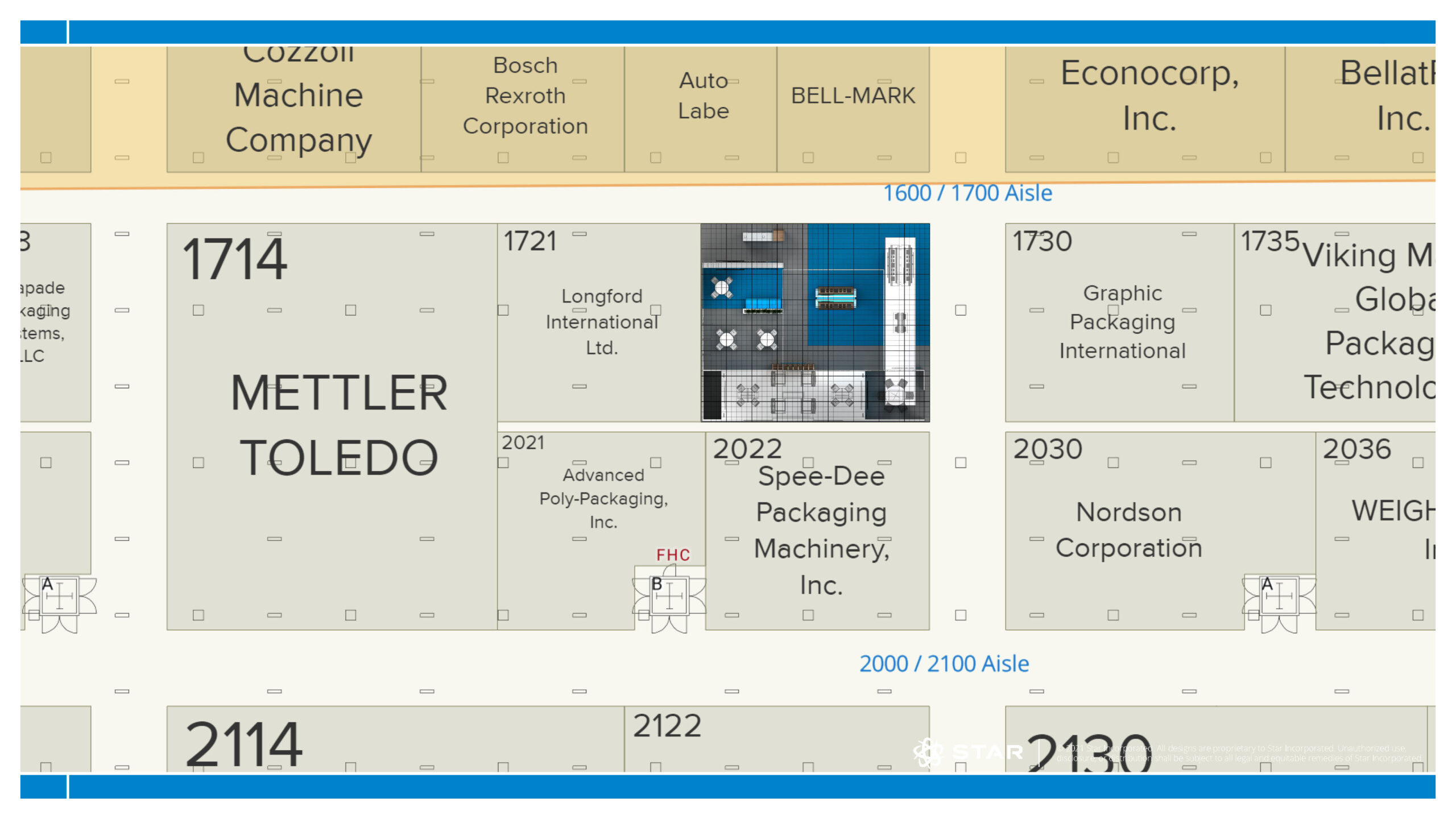When it comes to your trade show exhibit, selecting the right booth size and location is critical to your event presence. Your booth space has to be large enough to effectively showcase your products or services, conduct necessary presentations and meetings, and store necessary trade show items and equipment.
Here are five questions to ask yourself when choosing a booth size:
1. How much foot traffic do you expect?
Although you never can guarantee how much foot traffic your booth will generate, you can rely on some estimates. And knowing that up front can help you decide on the right-sized space.
Do you have meetings with prospective clients scheduled during or outside the show? Are you offering giveaways that will bring large numbers of people to your booth? Are you doing social media during the show with calls to action to look for your booth?
All of these things can generate more foot traffic — and will determine how much space you reasonably will need.
2. What are your seating expectations?
Many of the best trade show booths offer seating for meetings or conversations. If you’re planning to have one-on-one meetings with prospective clients, you’ll want to invest in the proper furniture to do all this — and quiet, less cramped spaces away from others who visit your booth.
To maximize on your booth space, be mindful of underutilized areas that could be considered for additional meeting space.
3. How much storage space do you need?
Your booth isn’t just about what the passersby sees on the outside — it’s also about what you tuck away on the inside.
Storage space is an important consideration when selecting a booth. If you have a computer and AV equipment, you’ll want to bring back-up screens and devices. You’ll also want to have plenty of space to put away refreshments and other giveaways without cluttering the public areas of your booth.
4. Do you prefer multiple access points?
A large booth allows for multiple entry points — something that is invaluable for many exhibitors, especially those in crowded, busy spaces.
Beyond an inline space, adding to your available booth size will always offer you more options — including peninsula or island booth layouts — which provide multiple entry points. Both have their advantages and disadvantages. For instance, an island booth gives you access from all sides but provides less wall and storage space.
It’s also important to remember, that it’s not just the size that matters, but also the location. Exhibitors who sign up early, have large exhibits or participant frequently usually are given the first choice for location. And premier exhibitors with a long history with a show can be given more choices. Establishing a good history and relationship with any given trade show will always be to your advantage. Being in a preferred location gives you access to more foot traffic – and, potentially, more attendee attention and engagement.
5. What is your budget?
A bigger budget can buy a bigger booth — but that’s not always what exhibitors need. Sometimes, a smaller space can appear warmer and inviting. Other times, a larger space can give you room for demonstrations or merchandise displays.
When deciding on your exhibit space, take a look at your overall budget. Do you want to devote more of it to audio visual equipment or giveaways, other marketing activities or off-site events, or do you prefer allocating more budget to your booth space?
It would help if you also planned for how many people will staff your booth. As a rule of thumb, account for 50 square feet of space for each person working in your booth. In that case, a 10-by-10 booth (100 square feet) require half of that space if two people are staffing the booth.
Because there will always be multiple factors that come into play, there will never be a quick or easy rule for selecting the right size of your trade show booth. But if you take the time to thoroughly evaluate your key booth space needs and objectives — including the features that will resonate most with your customer — the more likely you’ll be to find a perfect booth size that works for you.

